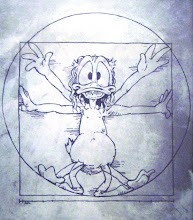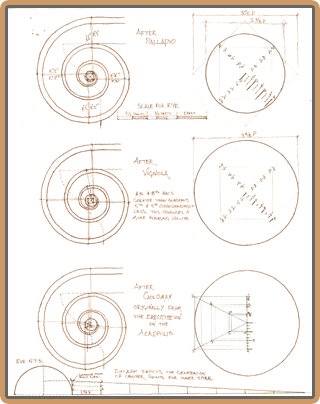
...to draw the line.
I was perusing 3D rendering sites today, and found the following image; which of course, pissed me off, along with pretty much everything else I saw, because it's all the same ilk. I’m not upset merely because it’s a horrible rendering (although it really is horrible), but because it reminds me of the current state of affairs between craft and art. As you look at the picture, notice that every thing is rendered with precision. The people are photo-real, the car is photo-real, etc. But are they accurate depictions? Where is the freakin’ light coming from? Everything is casting a precisely incorrect shadow, or at best, everything but one object. Not to mention there’s no indication of what the subject is: is it the architecture? The license plate? That annoying halogen lamp? Foreground, middleground and background are rendered with equal precision, thus, no atmosphere. I mean, really...if you're going to pick stock images of people for your rendering, pay attention to the details: in close proximity, there's a guy wearing an ugly Christmas sweater, a chick in the summer light with a tank top and shorts, and a GB Packer fan with a winter coat on. Just stupid. There are so many things about this rendering that suck, it's almost funny.
More precisely, the problem with this kind of representation is that there is an abundance of craft, and a scarcity of art. With a great amount of attention paid to the precision of the scenery, no attention was paid to the accuracy of the scene. This is characteristic of the neo-Dadaism that is currently pervading all of our visual arts. This is an ancient problem, and in much the same way as Manicheism, has shown it’s ugly face over the centuries under the guise of various names, but has essentially stayed the same. The underlying problem is concerned with craft. The 20th century Dadaists, detesting the reliance on craft in the Victorian age-an age that supported craftsmen producing much detailed work lacking ideas-turned and high-tailed it in the direction of the opposite extreme. Moving away from craft, these ‘artists’ began organizing prefabricated (found) objects into new scenarios. Thus, we end up with found objects, such as TOILETS acting as pieces of art. In this case, it’s all idea and no craft. In the architectural world, one would find it difficult to merely use or reuse a building (although IT HAS HAPPENED). Rather, we usually see an abundance of crafty responses to the idea by treating design as pure craft to the point of mockery. Any one of Frank Gehry’s TITANIUM POOPS will quickly inform the viewer that the craft of joining all these lustrous tiles of metal together was far more important to the architect than conveying any kind of notion of what kind of building that is or might be. This is not artistic composition. It's artistic compost.
In reality, in the mean, craft is requisite for clarity of idea. In the same way as the Vitruvian distinction between THEORY AND PRACTICE, idea is made known by quality and clarity of craft. And when this happens in proper measure, you have art. Too much craft with too little idea, and the art is meaningless rabble. Too much idea without craft, and the big thoughts are lost to the viewer. Unfortunately, TOO MANY ARTISTS have come to believe that craft alone is the generator of 'art'.
This is why it is so important for the divorce between craft and idea to be mended. We will produce no art until they are rejoined in proper measure.



2 comments:
Could you provide a link or source for that enticing "Vitruvian distinction"?
I have thought of abstract art as a kind of flight from reality, an effort to "create" in the pure sense of generating an entirely new realm that does not resemble the one we all live in. Does this have any relation to your description of "idea without craft"?
You can see that I am utterly ignorant of art history.
Ray gunner,
I added a link per your request.
As per your comment on abstract art, I think I'll have to ponder a bit, and perhaps answer in a (near) future post.
Post a Comment